DIY Home Solar (Victron ESS)
I've been waiting a while to write this post. As per almost everyone in the western world energy prices have gone up several 100% recently.
Prior to this I looked at getting solar installed and decided it just wasn't economically worth while.
That all however quickly changed!
I then like half the country looked for quotes for installs and along came the excuses, inflated costs, huge lead times; so I looked into doing it myself (myself and with some friends help of course!).
The basic regs in the UK are that you can do all of this yourself if you follow a few basic safety requirements;
- your equipment does not export its excess power to the grid (so you can't earn money on your exported electricity but the payments are so low that that might not bother you if you're saving £1000s on installation costs).
- your inverter is not more than 3.6kVA
- you can isolate your battery
- you can isolate your system from the AC supply
- your equipment will shut down if the grid fails*
Its also worth noting that you may not be able to sell your house with the equipment in place, which is actually fine if you plan to remove it and take it with you!
I went with Victron equipment because it can flex to pretty much every scenario out there. So its future proof, adaptable, and you can re-organise the setup very easily. Victron is also a longstanding EU company which helps with technical support and future software updates.
I decided to install my setup on the garage roof and also the lounge extension because they were easy to access with a ladder and received plenty of sunshine.
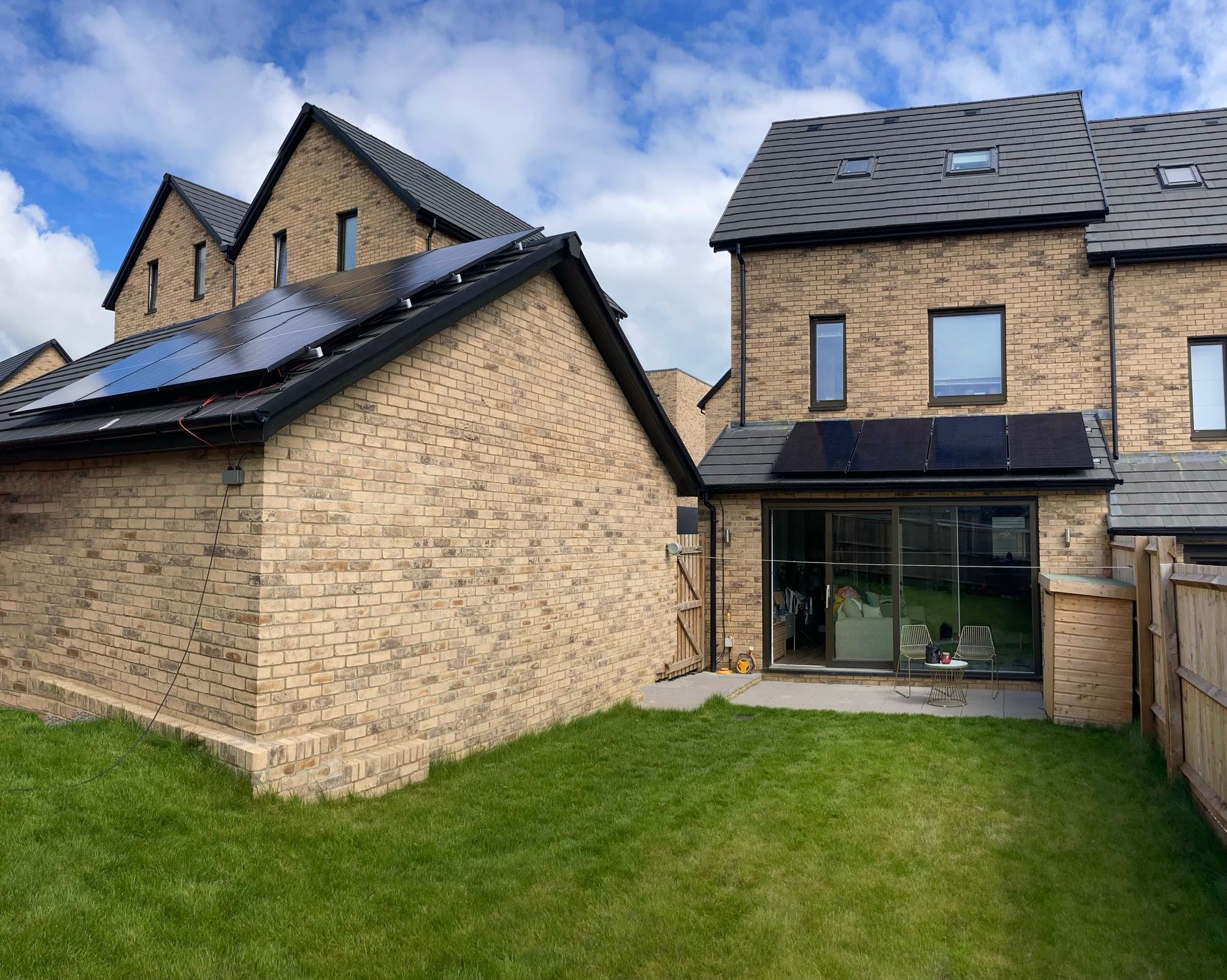
Before you fit the panels you need to size your system. I can't go through all the possible combinations but a few tips for your own research are.
- stick to 48v battery systems for your house (12v is only really for boats/vehicles)
- you need a minimum of 2.5kwh of panels for your system to be worth while (that's the same output as on the garage in my above photo)
- your equipment needs to go indoors so you need a space for it all
- use an app like https://hugoenergyapp.co.uk/ to check your usage before you make any decisions as your system will need to cover your usage.
- some companies (usually roofers) will just install panels but assume no one will because solar installers don't seem to interested and neither do roofers so assume you will need to do it entirely yourself
- in the UK your solar will do very little come Nov-Feb and Dec-Jan it will do almost nothing (this is to be expected) from April till October however you can expect to have electricity coming out of your ears on even modest days!
So il jump A LOT of steps and show you my setup;
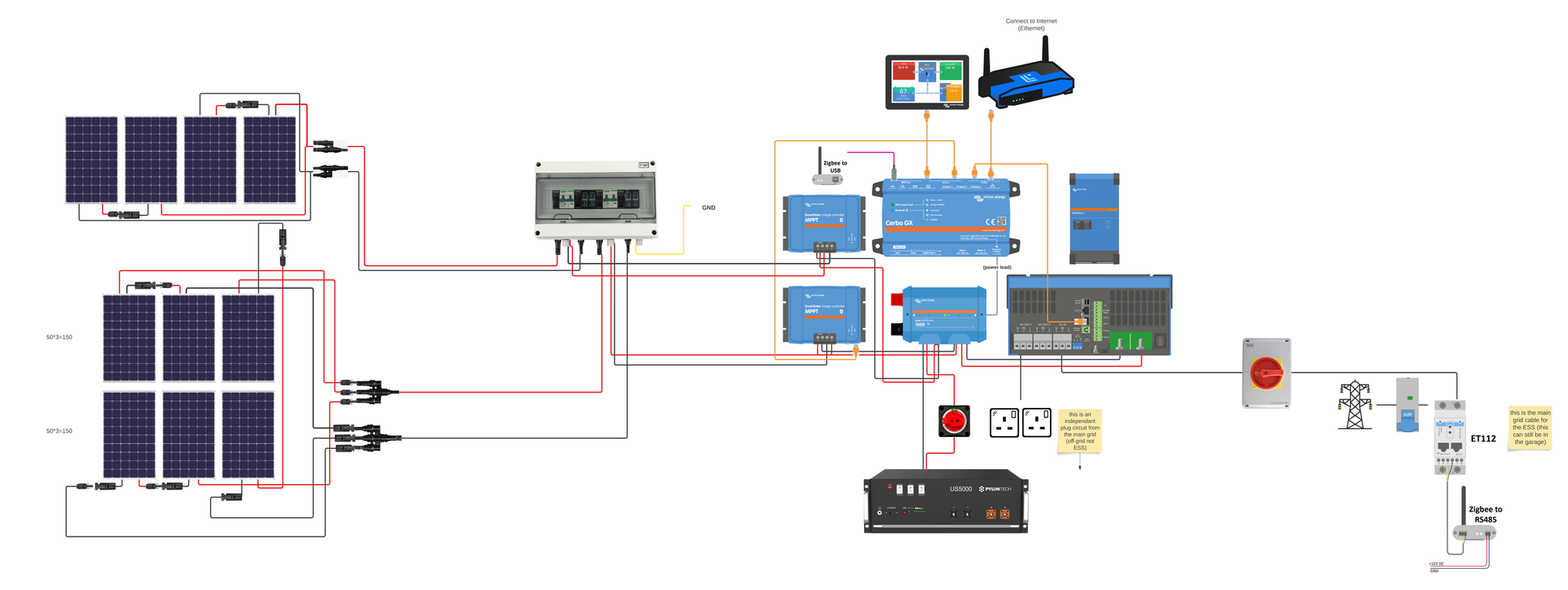
Here you can see the two solar arrays that go into a combiner box with some ESSENTIAL safety features! And from there go off to the various Victron boxes.
First the panels! Depending on the panels you get you might wire them differently, mine are wired in pairs and then all joined together. The aim is to get a higher voltage as possible without exceeding the limit of your mppt. Its also important to note that in the winter cold on a sunny day voltages spike quite a bit,
- so you have to consider that and build in a buffer to accommodate this. Even one very cold sunny day could blow up your system if you don't!
You then need a system to fit your panels to the roof. I used the Fastensol system which is great and 'just works'. This video basically shows you how this and a similar system work https://www.youtube.com/watch?v=oQz0EqHq38o
From the combiner box the next part is the MPPT this is what takes your solar power from the panels and regulates it for your system. The MPPT needs to be sized correctly for your panels for which I recommend this calculator https://www.victronenergy.com/mppt-calculator, essentially on victron products the first number on the mppt is the max voltage and the second is the max amperage it can push at - the first you cannot exceed the second is just a limit (like a top speed).
next step is the "busbar" this is like a central connection point for all your devices to grab/give power from/to. This has additional fuses inside for protection and different sized cables as different currents meet here (but still all around 48v).
The battery is then attached to the busbar with a DC switch on the positive cable for safety.
The inverter then connects to the busbar and converts power into regular mains that your appliances can use and, in my case, shoves it down the AC circuit that was already put in to power the garage - via an AC rated manual shut off switch.
(make sure before you do this that your garage feed is suitable for 32amps to be pushed through the wiring like this, the breaker in your consumer box should denote this limit).
Then there is the Cerbo GX which is the brains of the system (you can also save money by making this on a raspberry pi which Victron fully support!) and the zigbee receiver that gets live meter data from inside the house - and finally an optional display (you can use your mobile instead as the display isn't really essential).
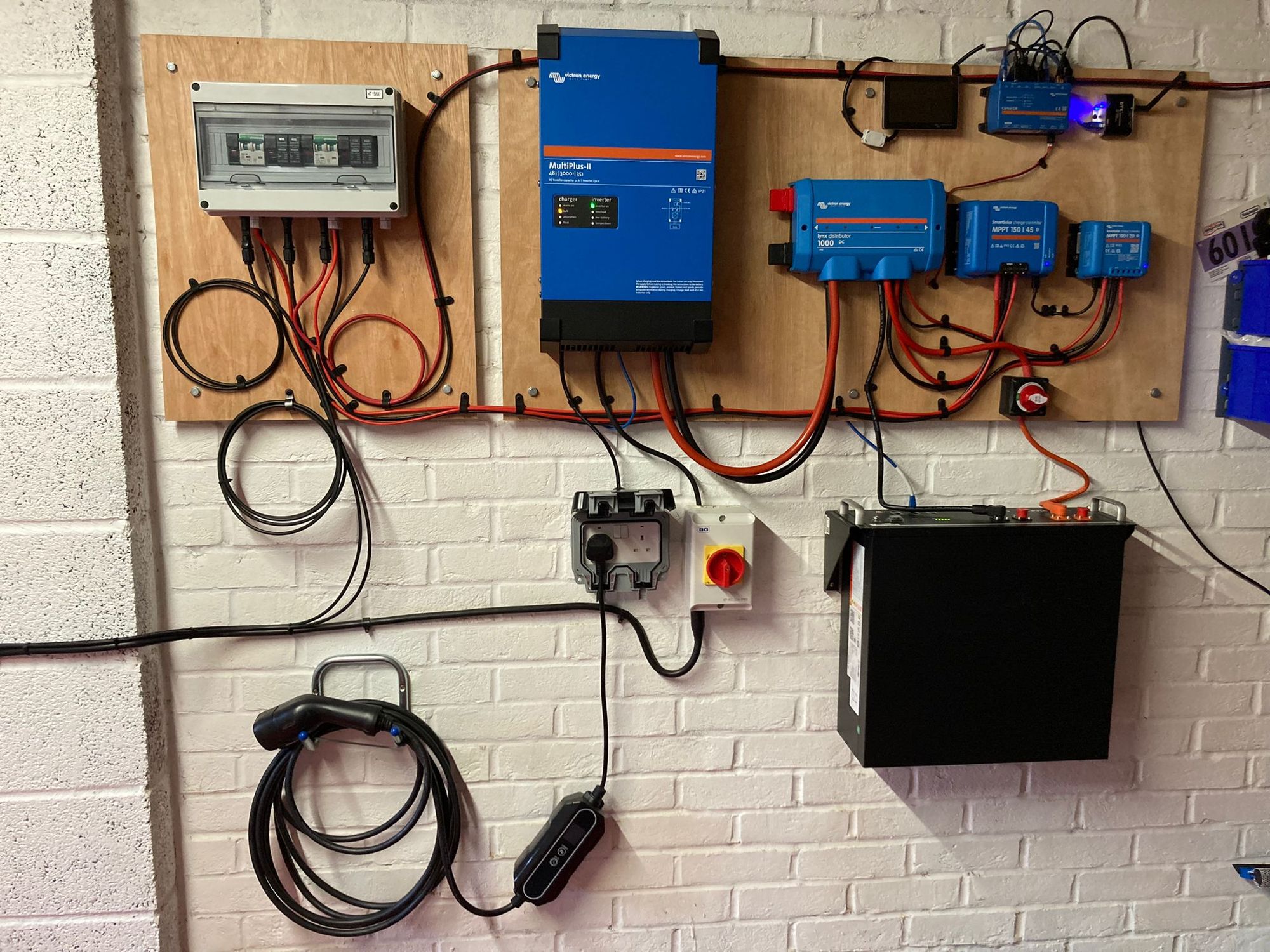
And yes there is an additional item on the meter board inside the house.
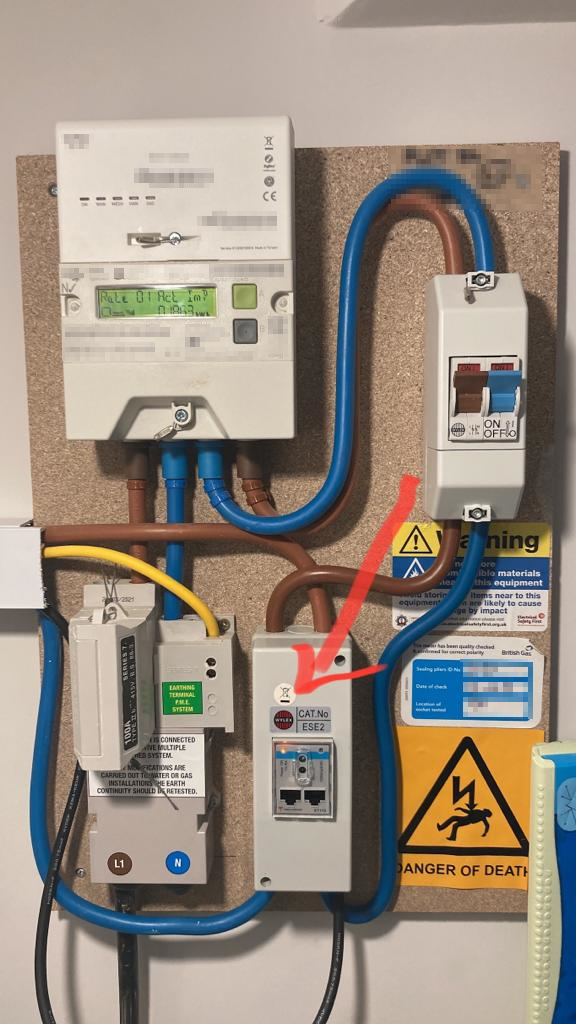
This setup is designed so that anything turned on in the house will be powered by the inverter up to the maximum output of the inverter. Anything over that limit is then taken from the grid. I think this is great as you can't overload the inverter and you can have anything on in the house without worrying about frying cables etc.
The inverter will use the grid to set the power within the house and then aim to maintain the draw at a set number of watts eg 50w. For context this even at May 2023 prices is about 45p per 24hrs so not expensive to maintain.
If the grid dies then the inverter shuts off for safety and regulation reasons.
The solar is used first to power loads in the house, then any excess goes to the battery. Once the battery is full the panels actually ramp down because we cannot export and there is nowhere for the power to go (this is totally safe).
If we then turn on a device the solar ramps up to match the demand near instantly.
As an indicator the output of the Victron Multiplus II 48/3000 inverter is enough to power;
- a modern washing machine (2000w)
- tv (200w)
- laptop (20w)
- fridge/freezer at idle (25w)
- lights (if led) (25w)
at once.
If you also turn on for example the oven (2000-2300w), that's exceeding the inverter output so the house will grab the difference from the grid.
So if you have washing to do it makes sense to stagger it so that these big machines are not running at the same time!
As an indication what uses a lot of power is nearly solely generating heat. A washing machine will peak at ~2000w while heating water but drop to 150-200w while operating without the heater on. If you have a games console that throws out a lot of heat then yes that's using maybe 300-800w because its getting hot.
Same as a halogen bulb that might use 50w each and output useless heat compared with an led that uses 5w and produces almost no discernable heat.
This makes a big difference when the sun has set and you're on the battery. A modern house will clear the whole evening including cooking, tv, gaming, lights the lot. And still wake up with 40% remaining.
An older house or a house with eg a hot tub or other hungry items will drain the battery of the same size significantly faster.
So I hope you found this useful and for those looking into this further I recommend doing a lot of research first! Drawing out what you plan to do long before buying anything!
Remember you will need tools to cut wires and terminate them properly, for this I recommend watching this playlist https://www.youtube.com/watch?v=JonRJVchBaQ&list=PLmvhcyi4n0TUjVGA_O5aI5SQrS1kKLgEF
Also although this is van orientated I recommend watching almost all of their videos as it is all victron related and the youtube channel covers EVERYTHING without skipping the details!

Suppliers -




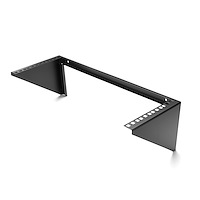



Lastly the cost!
The whole install cost me £7000 you could do it for £6000 if you just had the 6 panels and not the additional 4 - but as you can see its perfectly fine to add more as necessary later without a lot of trouble.
This includes everything including consumables and a bag of tools that you'll need.
Amazon and eBay are both good for cable and wire/cable fixings if you can't find them in screwfix but if you plan out everything first you should know roughly what quantities you need.
Disclaimer :
For informational purposes only.
I am not responsible if you do not follow local laws, regulations and safety codes.
If you do not feel confident building a system, please find a professional.



